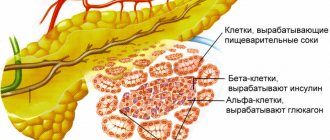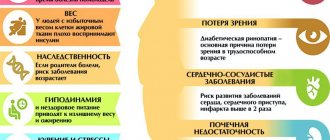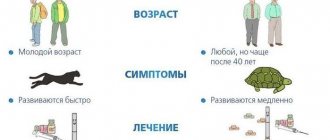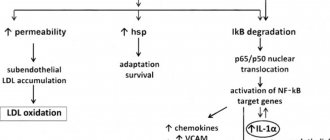Often, having learned about diabetes in themselves or, even worse, in their child, people do not understand the causes of the disease, but look for its treatment. They anxiously enter questions into all search engines: “Is it possible to cure diabetes?”, “How to treat diabetes?”, “How to get rid of diabetes forever?”.
And unfortunately, there is so much you can’t find on the Internet! The headlines are full of loud names that promise to permanently heal a patient from this disease in literally 1 month or even 1 day. What is not offered: herbs and tinctures, dietary supplements and tablets, treatment with a magnet and holy water, even stem cells.
Diabetes mellitus is a chronic disease. Having fallen ill with it, you must understand that you constantly need to follow all the doctor’s recommendations and be treated with medication. The goal of treatment is to maintain optimal blood glucose levels to minimize the risk of developing diabetes complications.
But in order to answer the question that worries everyone, whether the disease is curable or not, you need to understand the reasons for this diagnosis. Because any disease can be cured only by eliminating its cause.
There are 2 main types of diabetes: type 1 (insulin-dependent, diabetes of young people) and type 2 (non-insulin-dependent, diabetes of older people). They have completely different causes, but the same result - both types lead to hyperglycemia (increased blood glucose levels).
Type 1 diabetes is curable or not?
Several advanced medical centers have conducted experiments with human cells. Scientists observed the work of artificially formed islets of Langerhans and stimulated the release of the necessary enzymes.
From the composition of the cells, doctors created tissue similar to the pancreas and transported them to mice with type 1 diabetes. As a result, the new tissues secreted insulin and controlled the amount of glucose just like the normal pancreas.
Experts expect to continue human studies to determine how effective their technique is. Scientists are optimistic about this method. They hope that in the future people will be able to get rid of diabetes only thanks to biomaterials from their own bodies that have undergone laboratory processing.
How is type 1 diabetes treated?
Endocrinologists have hopes of developing a vaccine against type 1 pathology; if used successfully, it can stop the development of the disease. The vaccine should prevent the immune system from affecting the formed elements of the pancreas.
Today, developments are carried out in 2 directions:
- American production of Selectabioscience, which creates new types of medicine using nanotechnology. The pharmaceutical company offers immunotherapy using a synthetic-based SVP vaccine, which affects the principle of operation of the immune system and restores tolerance to antigens that provoke immune attacks on tissues that produce insulin. The developers guarantee a high level of safety and no side effects.
- The FaustmanLab research center is developing the BCG vaccine, which has been used for almost 100 years to protect the body from tuberculosis and inhibits the development of category 1 diabetes. Scientists discovered this property when they realized that BCG can briefly reduce the activity of leukocytes responsible for affecting pancreatic tissue; the vaccine stimulates the production of T cells that prevent autoimmune abnormalities. The first stage of clinical trials showed good results. After 2 injections a month later, diabetics noticed a decrease in the intensity of T-cell death and a resumption of insulin secretions.
In the summer of 2020, phase 2 of the research began. Scientists are determining whether the vaccine can normalize the condition of patients and restore the ability of the pancreas to produce hormones.
Stem cells
These are unformed cells that are present in the bone marrow. When any organ is damaged, they are released into the blood and restore damaged tissue.
Therapy is used for the following diseases:
- multiple sclerosis,
- problems with blood supply to the central nervous system,
- Alzheimer's disease,
- acquired mental retardation,
- cerebral palsy,
- heart failure,
- ischemia,
- obliterating endarteritis,
- joint inflammation,
- problems with the immune system,
- Stem cells are used for the purpose of rejuvenation.
Scientists are developing a way to combat diabetes using stem cells and are hopeful about this technique. The operating principle is as follows:
- a fragment of bone marrow is removed from the femur or sternum using special instruments,
- stem cells are processed,
- part of the biomaterial is frozen for future testing,
- the rest are in a special incubator, where their number increases 10 times,
- the resulting biomaterial is implanted into the diabetic organ through a catheter.
The procedure is performed under anesthesia, patients feel warmth in the diseased organ. If stem cells cannot be administered through a catheter, intravenous infusion is performed. You will have to wait 50 days for the damaged pancreatic fragments to recover.
During this period the following transformations were observed:
- stem cells take the place of damaged formed elements,
- new tissues are involved in the secretion of enzymes,
- new sections of the circulatory system are created,
- To speed up this process, doctors prescribe special medications.
After 3 months, the results are assessed. According to the developers of this technique and the results in modern clinics, diabetics’ general well-being is stabilized, the amount of glucose in the blood is normalized, insulin dosage is regulated, and the level of glycated hemoglobin is normalized.
Positive results from diabetes therapy using stem cells can be obtained when complications of the disease develop. Polyneuropathy, diabetic foot and other disorders are treated by implanting stem cells into the affected areas of the body. Blood supply in these places is normalized, nerve conduction improves, and ulcers heal.
To consolidate the effect, several courses of therapy are necessary. Cell transplantation is performed after 6 months. In this situation, frozen cells are used.
According to specialists who carry out therapy in this way, 50% of patients have good results, long-term remission of diabetes occurs, and the disease does not make itself felt for 1.5 years. Sometimes patients are able to give up artificial insulin for 3 years.
The insulin-dependent form of diabetes is an autoimmune pathology. When stem cells replace damaged elements of the pancreas, the immune system attacks them in a similar way, and they do not take root well. To prevent rejection, medications are used to suppress the immune system.
The following complications are possible:
- the likelihood of toxic reactions increases,
- vomiting, nausea,
- immunosuppressants provoke hair loss,
- the body loses protection against infection,
- cells divide without control,
- neoplasms develop, and oncology is possible.
The combined method involves the implantation of stem cells with a gene that promotes their transformation into T cells, which subsequently restore the structure of the pancreas and produce insulin. The immune system's reaction to it is not so strong; during the course of therapy it is necessary to give up alcohol and tobacco products. Follow a diet and provide the body with moderate physical activity. Features of this treatment method:
- you can reduce the dosage of artificial insulin,
- it is possible to get rid of complications in the form of vision problems or disruption of the circulatory system in certain parts of the body,
- the non-insulin-dependent form of the disease responds better to therapy,
- Remission begins faster, since the immune system does not contribute to the destruction of new cells.
The technique has not yet been fully studied; there are only some positive reviews.
Stages of diabetes compensation
It is necessary to note the state of compensation of diabetes mellitus and the manifestation of symptoms depending on the specific stage:
- compensation;
- subcompensation;
- decompensation.
To assess the degree of compensation of carbohydrate metabolism, it is necessary to measure not only the level of glucose in the blood, but also the biochemical parameters of the blood:
- glycosylated hemoglobin in the blood (compensation - less than 6.5%; subcompensation 6.5-9%; decompensation - more than 9%);
- fructosamine (compensation - not higher than 285 µmol/l);
- indicators of fat metabolism (compensation - TAG triglycerides no higher than 1.7 mmol/l; LDL lipoproteins - less than 3.0 mmol/l, and HDL - more than 1.2 mmol/l; cholesterol - less than 4.8 mmol/l);
- ketone bodies (compensation - not higher than 0.43 mmol/l);
- osmotic pressure levels (compensation - no more than 290 - 300 mmol/l), etc.
At the stage of compensation of carbohydrate metabolism, symptoms of thirst, polyuria, and hypoglycemia disappear. The patient feels like a healthy, full-fledged person. Fasting and postprandial glucose levels are within normal limits (fasting less than 6.1 mmol/l, after 2 hours 7.5 mmol/l). Glucose is not detected in the urine.
With subcompensation, the patient's condition worsens. The blood glucose level on an empty stomach is 6.1-7.0 mmol/l, after 2 hours - 7.5-9.0 mmol/l. Thirst and dry mouth may occur in the morning, hypoglycemic reactions may be absent. Glucose in urine - up to 5% of the sugar value of food. There are no ketone bodies in the urine.
Decompensation of diabetes mellitus is characterized by the inability to correct blood sugar with medications. All symptoms of diabetes mellitus are clearly manifested. Severe complications occur, including the development of comatose states requiring emergency resuscitation. The fasting glucose level is much more than 7.0 mmol/l, after 2 hours it is more than 9.0 mmol/l. This stage is characterized by the development of acute complications - hypoglycemic and hyperglycemic states, ketoacidosis, glucose in the urine above 5% of the carbohydrate value of food. Also at this stage, chronic complications of diabetes mellitus develop (neuropathy, nephropathy, cardiovascular disorders, retinopathy, diabetic foot).
A state of decompensation is caused by heavy physical and emotional stress, non-compliance with diet and regular intake of glucose-lowering drugs and insulin. Many patients never reach the stage of diabetes compensation.
Products for the treatment of type 1 diabetes
Endocrinologists help diabetics create a suitable diet to normalize blood sugar levels; some foods have a low glycemic index and do not saturate the body with large amounts of glucose.
Salad with fish and potatoes
Ingredients:
- white fish,
- potato,
- beet,
- carrot,
- cucumbers
The fish is placed in salted water, boiled with spices, and cooled. Vegetables are also boiled, peeled and chopped. All ingredients are mixed and seasoned with vegetable oil.
Vegetable salad
Ingredients:
- sour apples,
- onion,
- bell pepper,
- cucumbers,
- mint leaves,
- vegetable oil,
- tomatoes,
- lemon juice,
- salt.
Peel the onions and apples and chop the ingredients into cubes. The tomatoes are placed in boiling water, then in cold water, peeled, and the pulp is crushed. All ingredients are poured with a marinade of vegetable oil and lemon juice, mixed and seasoned with mint.
Noodle and turkey soup
Ingredients:
- turkey fillet,
- bulb,
- butter,
- vermicelli,
- carrot,
- potato,
- bell pepper,
- salt.
The meat is washed, dried, chopped, placed in a pan, and boiled. The foam is removed during the cooking process. After 20 minutes, the broth is removed and clean water is collected. Cooking continues, the meat is salted a few minutes before completion. The finished broth is filtered, put on fire, onions, vermicelli, and other ingredients are added. The meat is placed in the soup, the liquid is brought to a boil. The dish is decorated with greens.
Fraudulent treatments
Unfortunately, there are people who make money from the misfortune of others. Such scammers always answer the question of whether diabetes can be cured. They offer a number of miraculous methods that can not only reduce glycemic levels, but also restore the functional state of the pancreas.
Fraudsters offer the following tools on the Internet and in the form of private distribution:
- Drugs that cleanse the body of toxins and toxic substances. At the same time, charlatans claim that it was the exposure to chemicals and toxins that disabled the gland.
- Herbal medicine and jogging in combination with avoiding insulin therapy. This method is not only not supported by qualified endocrinologists, but is also considered dangerous, as it can lead to the development of ketoacidosis and coma.
- Vibrating devices, medallions to lower blood sugar. On the one hand, such methods are considered ridiculous, but if the patient is in a state of despair, then he is ready to try any method, even such a specific one.
- Hypnosis - it is believed that such an influence on the patient’s subconscious can solve the problem of psycho-emotional disorders, but does not restore the functioning of the affected organ.
Important! It should be remembered that such unconventional methods pursue the only goal - profit from sick people.
Cases of cure for type 1 diabetes
Examples of cures for type 1 diabetes have not been officially registered. There are no necessary medications for this; it is not possible to fully influence the causes of the disease.
It is possible to maintain the normal state of the body thanks to artificial insulin and following the recommendations for complex therapy. This allows you to avoid negative consequences.
Type 1 diabetes develops due to a lack of insulin and poor pancreatic function. It is impossible to completely get rid of the pathology; it is possible to promptly determine the development and contain the spread of diabetes using preventive measures.
Prevention and recommendations
We list the main preventive recommendations that diabetics receive from endocrinologists:
- Do not consume refined carbohydrates or foods containing sugar;
- it is necessary to exercise daily, physical activity on the body should be moderate;
- drink more water, at least 1.5 liters a day;
- if you have problems with excess weight, you need to get rid of obesity and stop gaining weight;
- give up alcoholic beverages and tobacco products;
- give preference to foods low in carbohydrates;
- fractional meals 5-6 times a day in small portions;
- when working sedentarily, it is necessary to regularly warm up, walk outside, and eat foods enriched with fiber;
- supply the body with the necessary amount of vitamin D;
- drink coffee or tea;
- curcumin and berberine improves the functioning of the endocrine system.
Type 2 diabetes occurs in 70% of patients predisposed to this disease. It is possible to avoid the development of pathology if you take the necessary preventive measures in the early stages after diagnosis.
If you follow all the recommendations of doctors, diabetics can lead a full life even in a situation where the pathology is diagnosed at a late stage.
Why is diabetes considered incurable?
Diabetes always leads to fatal complications. High blood sugar is extremely dangerous.
Lyudmila Antonova gave explanations about the treatment of diabetes.
Was the article helpful?
Rate the material on a five-point scale!
If you have any questions or want to share your opinion or experience, write a comment below.
When will type 2 diabetes be curable?
Modern technological capabilities and the work of scientific researchers allow us to have high hopes for the successful development of methods for treating type 1 and type 2 diabetes.
There is definitely a need to provide a comprehensive impact on all factors influencing the development of diseases. It is necessary to correct the functioning of the immune system, promote the restoration of the pancreas, and influence the ability to process glucose in other ways.
Scientists believe that in the near future it will be possible to achieve success in developing new methods that will significantly alleviate the condition of patients and achieve long-term remission.
Complications of diabetes
Pathological changes in the human body, provoked by the presented form of the disease, can be numerous. Speaking about this, they pay attention to the likelihood of developing ketoacidosis and hyperosmolar coma.
In addition, in case of an overdose of insulin, a hypoglycemic coma may begin.
In the absence of correct treatment and a predisposition to certain diseases, a person may develop complications such as:
- macro- and microangiopathy - destabilization of the degree of vascular permeability;
- polyneuropathy - polyneuritis of the peripheral nervous system;
- arthropathy - constant pain in the joints;
- ophthalmopathy - formation of cataracts, retinopathy;
- nephropathy - damage to kidney function;
- encephalopathy - mental disorder, behavioral changes, emotional lability.
It will be possible to avoid such terrible consequences only if timely and complete treatment is carried out. It is very important to take into account preventive measures that will help either avoid this form of diabetes altogether or alleviate its course.











